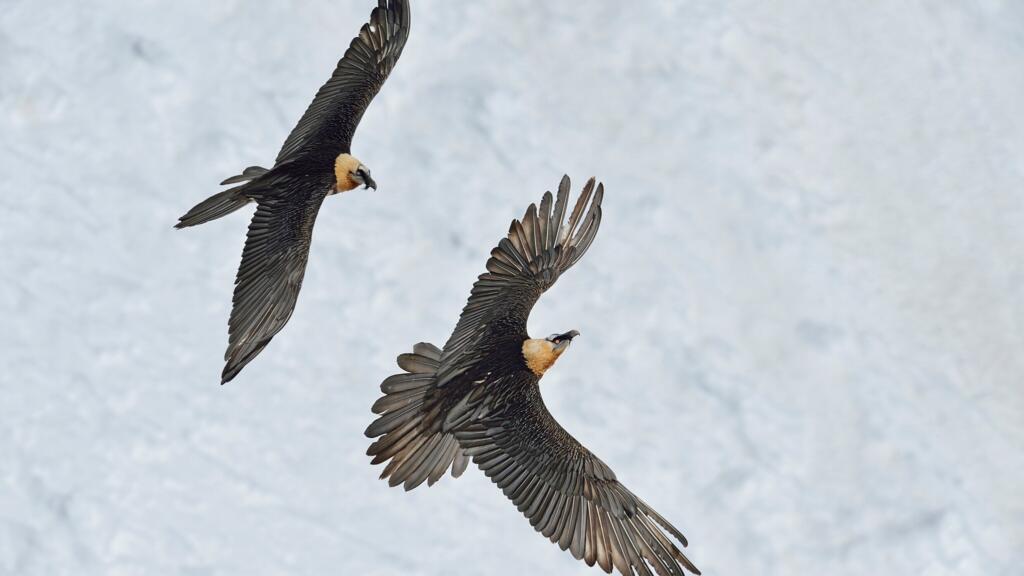
In a hidden valley in the French Alps, conservationists are quietly raising Europe’s largest bird of prey – the bearded vulture – once wiped out from these mountains. After a century away, it is once again soaring again over the Alps, but its comeback still depends on human care.
Up a steep track above the village of Sallanches in the Arve valley, the road turns to rock and tree roots. Beyond the beech trees, a meadow opens on to a view of Mont Blanc and the Fiz and Aravis ranges. Nestled here is the Asters breeding centre, a small conservation site that has worked since 1986 to bring the bearded vulture back to the Alps.
Its exact location is kept secret. The birds are extremely sensitive to stress – it can even kill them.
“You can tell their state of mind by the red ring around the pupil,” says Étienne Marlé, a field worker who helps care for the birds. “If it widens, it means stress or excitement. That’s our signal to stop and come back later.”
Each aviary is equipped with cameras, including one trained directly on the nest. These run day and night so staff can observe the birds without disturbing them. The footage is also available online, allowing anyone to watch the birds in real time.
“It’s not a zoo,” Marlé says. “We don’t receive visitors. We just feed them in the morning and leave them in peace.”
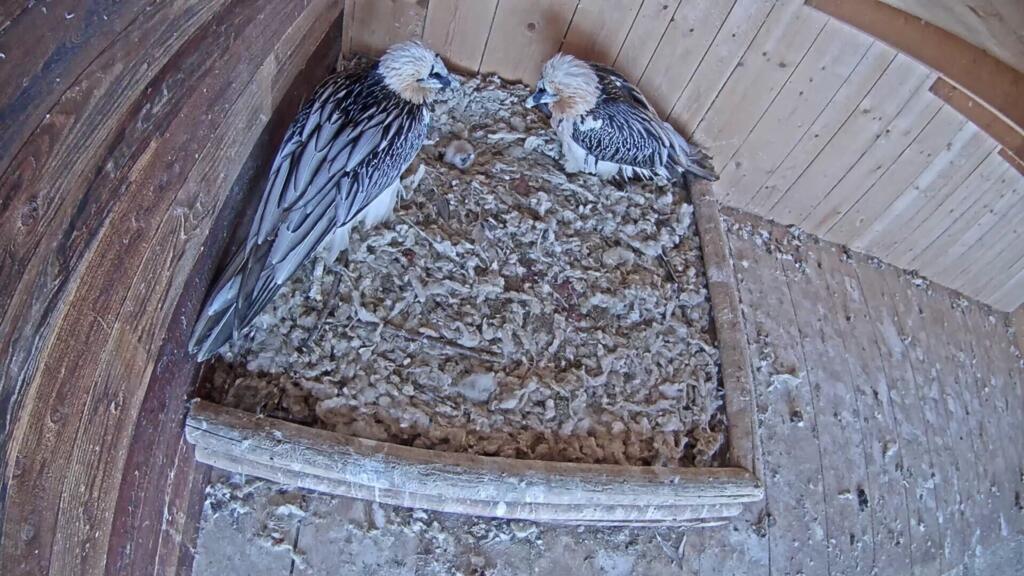
'Bone breaker'
The bearded vulture, or Gypaetus barbatus, is an icon among Alpine wildlife. Each pair needs a vast territory – up to 500 square kilometres – to find enough food and nesting space.
A scavenger, it survives mainly on bones – which make up around 80 percent of its diet – which it digests with its highly acidic stomach juices.
In the wild, if the bones are too large to swallow it carries them high into the air and drops them on to rocks to smash them apart – a habit that explains its Spanish nickname, quebrantahuesos, or "bone breaker".
By feeding on carcasses left behind by other animals, the bird clears the mountains of decay and helps prevent disease. It also keeps mountain water sources pure and saves farmers the trouble of hauling dead livestock down from high pastures.
“Reintroducing the bearded vulture is a way of repairing our past mistakes by restoring biodiversity,” Marlé explains.
He feeds the centre’s three breeding pairs six days a week. “On the menu today: sheep and rabbit legs,” he says, smiling at the smell.
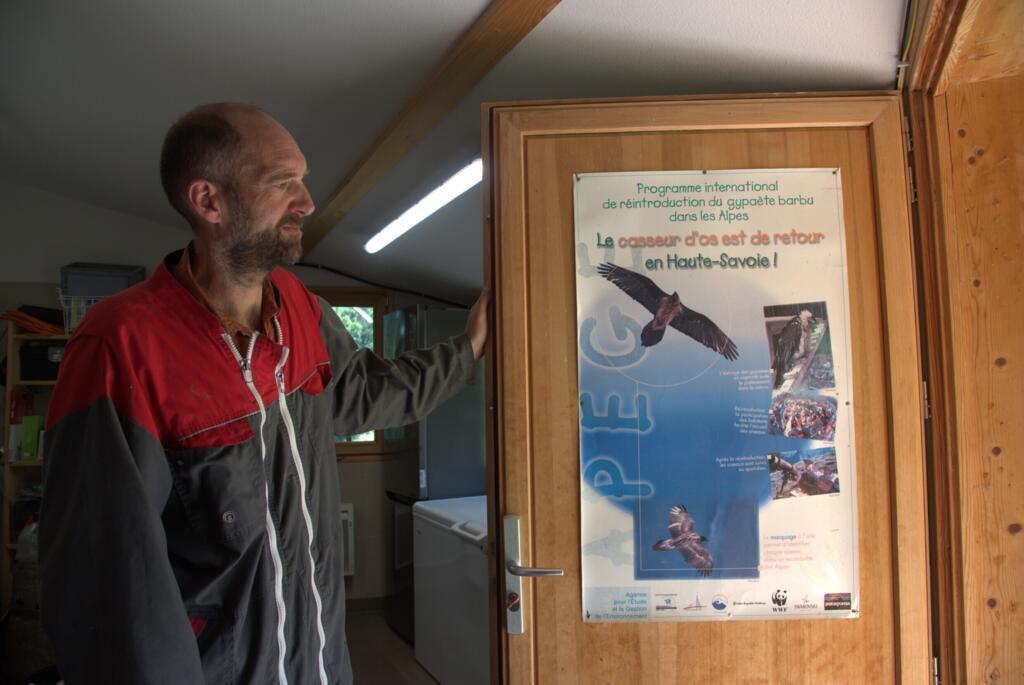
Raising a new generation
Two of the centre’s young adults, Flata and Bargy, were born in 2019. “We paired them early so they could bond and start nesting,” Marlé says. “Our goal is to understand how each pair works and give them the best conditions for breeding.”
If an egg or chick needs help, it can be placed in an incubator, but staff prefer to let parents raise their own – otherwise the bird might grow up seeing humans as friends and its own species as rivals.
The vultures remain still as people pass by, moving only their heads. “They see us, but they won’t eat until we’ve gone,” Marlé adds. “They’re not hungry animals.”
Nearby, a rabbit hops about. Visitors sometimes expect drama, Marlé says. “People wait for the bird to pounce. But it never does – it’s a scavenger, not a killer.”
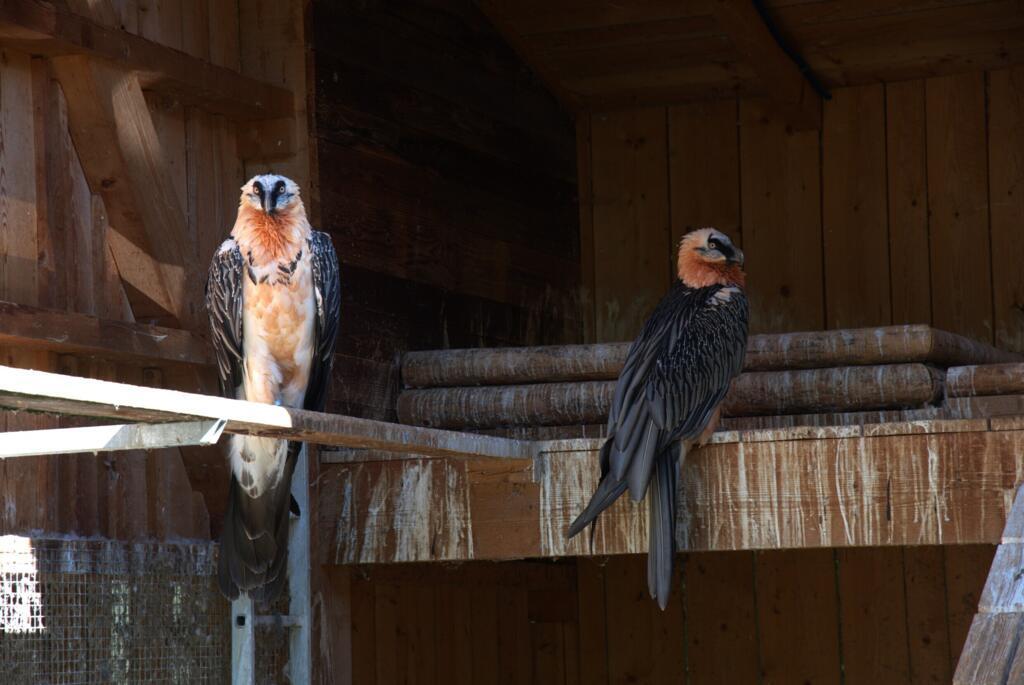
At least 650,000 years old, the bearded vulture once shared the mountains with wolves and early humans.
With its vast wingspan, black beard and hooked beak, it has a fierce look. For centuries, local myths claimed that it carried off children or pushed livestock over cliffs. In the 19th century, even scientists accused it of killing cattle.
Those fears led to its extermination across the Alps, with the last known Alpine bird shot in Italy in 1920.
Hunters were paid to destroy them, their bodies ending up in museums and private collections. “It was pure prejudice – the bird was just unlucky to look intimidating,” Marlé says.
Black when young, the bearded vulture’s chest turns pale as it matures. Some later stain their feathers orange-red by bathing in iron-rich mud – a natural show of dominance seen in both males and females.
Birds in France still ingesting toxic lead pellets 20 years after ban
A European rescue
Efforts to bring the species back began in the 1970s but took off in 1987, when a bird named Phénix was released in France.
Today, six breeding centres – in France, Austria, Switzerland and Spain – and around 30 zoos from Finland to Kazakhstan form a vast European network coordinated by the Vulture Conservation Foundation.
“We pool the birds we produce and distribute them based on genetics, age and release sites,” Marlé explains. “Now we have wild-born bearded vultures in the Alps that have never been touched by human hands.”
At three months old, chicks born in captivity are transported to release areas such as regional parks or bird protection groups. They are placed in artificial nests and fed without ever seeing people. After a month, they take their first flight.
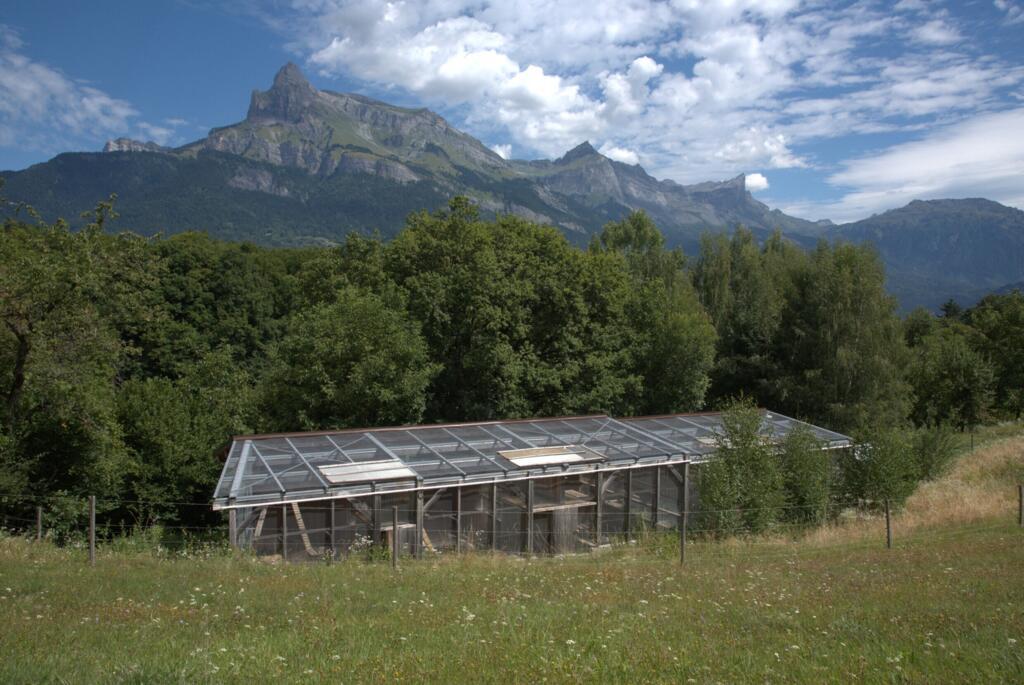
Still endangered
Four decades of work have brought 29 breeding pairs to the French Alps and 93 across the Alpine range – a small number, but a real success. “We started from zero and the population is growing,” said Marlé. “It’s working.”
Still, the recovery is slow. Bearded vultures reproduce only from age seven, raising one chick every two or three years. The nesting period lasts almost a year, from October to late August.
“For now, the number of pairs is rising and their range is expanding,” says Marie Heuret, who leads France’s national recovery plan. “But if just three or four more adults died each year, that progress could reverse. The balance is very fragile.”
The species also needs genetic reinforcement to stay healthy in the long term.
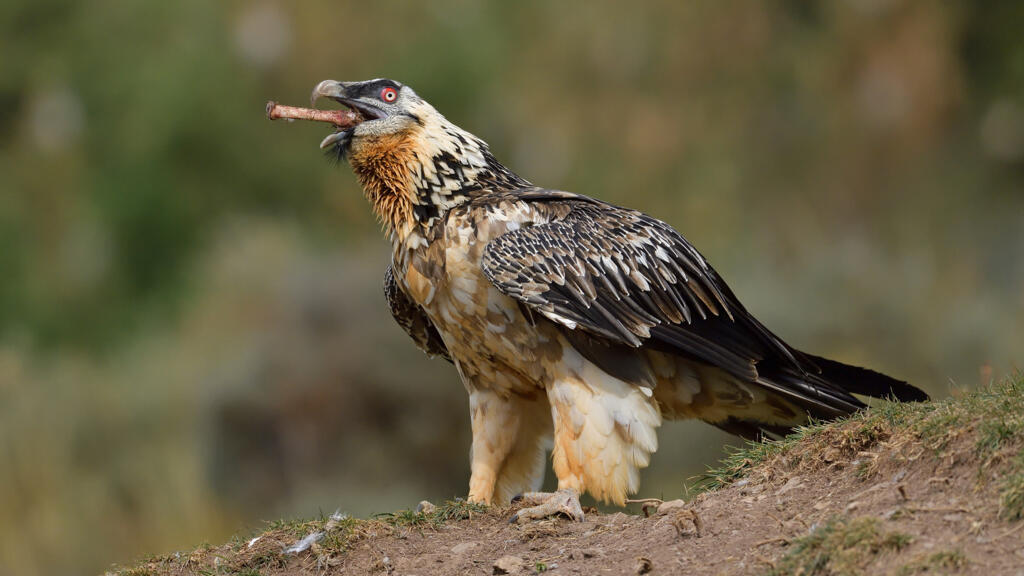
The latest Red List from the International Union for Conservation of Nature, released this month, still classifies the bearded vulture as endangered in France and the Mediterranean region, where numbers have halved over 40 years. In Corsica, the species is close to extinction.
France has unveiled a new 10-year plan to protect the bearded vulture, as it makes its fragile comeback in the Alps. The plan aims to raise the number of breeding pairs across the country’s four mountain ranges by 42 percent by 2034 – reaching 130 pairs, including 54 in the French Alps.
It coincides with growing public interest, with more than 1,000 people across Europe recently joining a special observation day dedicated to the bird.
From ornitherapy to kissing trees, how can nature benefit human health?
Threats from humans
Each young bird carries a GPS tracker so researchers can monitor its journey across the mountain chain. “Some used to disappear without trace,” Marlé says. “Now we can learn what really caused their deaths.”
The main threats to these birds are poisoning, lead contamination and power lines. Of 77 recorded deaths since 1989, 21 were caused by toxic substances.
“If someone poisons a sheep to kill wolves, the bearded vulture will eat it too,” Marlé says. The birds also suffer lead poisoning when they swallow bullet fragments left in carcasses.
Fifteen have died after colliding with electrical or ski-lift cables. Partnerships with ski resorts and energy operators now help fit lines with visual markers and anti-electrocution devices.
Some are still shot, despite being fully protected. Thirteen have been killed by gunfire since 1989 – seven of them between 2010 and 2020.
One mystery, however, remains unsolved – the death of Rei del Causse, a three-year-old bird found lifeless in the Cévennes in May after travelling as far as Austria. No lead, poison or virus was detected.
Even high up in the cliffs, these birds are not left undisturbed. Helicopters, wildlife photographers and mountain sports such as off-piste skiing, paragliding, wingsuit flying and ice climbing all encroach on their habitat.
“If climbers pass close to a nest every day, the birds will leave and breeding will fail,” Marlé says. “We need to communicate better and mark nesting sites clearly so people know to avoid them.”
Dialogue with local communities remains key – and mostly positive. “It’s an animal that inspires real affection,” Heuret explains. “It brings together very different people because it’s not controversial.”
Like the mythical phoenix with which it was once compared, the Alpine bearded vulture is rising again – but its future remains fragile.
This article was adapted from the original version in French by RFI's Géraud Bosman-Delzons







